MISSISSIPPI
 |
| www.pdclipart.org |
Achieving statehood on December 10, 1817, and becoming our nation's 20th state, Mississippi lies in the southern United States. In 1540, Spanish explorer, Hernando de Soto, discovered the Mississippi River. He was buried in it in 1542 after he died of fever.
 |
| www.pdclipart.org |
More than 100 years later, French explorers Marquette and Joliet explored more of the Mississippi River. In 1682, La Salle and Cavalier traveled along the Mississippi River and claimed all the land along it for France. The first colony was established in 1699. The French controlled the area until the French and Indian War when it was won by the British.
When the British were defeated in the Revolutionary War, the southern part of Mississippi was given to Spain, and the northern half became part of the United States. The U.S. laid claim to the southern half after the Louisiana Purchase, claiming that the land was a part of the deal. With U.S. military force and little resistance by Spain, this area became part of the Mississippi Territory.
Mississippi, postal abbreviation MS, is the 32nd biggest state. The capital city is Jackson and is named after Major General Andrew Jackson who would come to be the seventh president of the United States, serving from 1829 to 1837.
Mississippi's two nicknames are "The Magnolia State" and "The Hospitality State." The former is the official nickname and is because the Magnolia is the state flower and the state tree. The Magnolia is depicted on the Mississippi quarter.
The state bird is the Mockingbird, and the state mammal is the white-tailed deer. The bottlenosed dolphin is the state water mammal. The honeybee is the state insect, while the state butterfly is the spicebush swallowtail. The fish is the largemouth bass, and the state shell is the oyster.
Mississippi's state flag was adopted in 1894 and contains a small Confederate flag in the upper left corner and one blue, one red, and one white horizontal stripe.
People who live in Mississippi are called Mississippians. Famous people born in Mississippi include boxer/minister Henry Armstrong; radio/television personality Red Barber; mayor of Washington, D.C., Marion Barry, Jr.; civil rights activists Ruby Bridges and Medgar Evers, singers Jimmy Buffett and Brandy and Bo Diddley; football coach Tony Dungy; authors William Faulkner and Shelby Foote; creator of The Muppets Jim Henson; founder of BET Robert Johnson; Elvis Presley; Leann Rimes; Ike Turner; Conway Twitty; and Oprah Winfrey. There have been many authors, sports stars, civil rights activists, and musicians/singers born in Mississippi.
The world's first lung transplant was performed at the University of Mississippi. The observance of Memorial Day resulted from the kindness of women in Mississippi who, on April 25, 1866, placed flowers on the graves of both Union and Confederate soldiers. This state is the home to the International Checkers Hall of Fame.
Mississippi boasts some "Capitals of the World":
Greenwood is called the "Cotton Capital of the World."
Belzoni is "Catfish Capital of the World."
Vardaman is "Sweet Potato Capital of the World."
Root beer was invented in Biloxi in the late 19th century. Pine Sol was invented in Jackson. There is a cactus plantation in Edwards; it is the only one in the world. Holmes County is home to the very first 4-H Club; it began in 1907. It is said that the Mississippi Delta is the birthplace of the Blues.
There are many things to do in Mississippi. Like every state, there are zoos, museums, amusement parks, and state parks. There are also military parks. Mississippi lost more men in the Civil War than any other southern state. Sixteen separate sites are national parks. The antebellum life is represented by numerous plantations. Rowan Oak is William Faulkner's House and can be toured. Dockery Plantation is a cotton plantation and sawmill. It is said that the Blues began here.
Try your hand at some Mississippi learning games.
The following items are for sale through Christianbook.com.

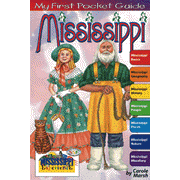 |
Mississippi Pocket Guide, Grades 3-8 By Carole Marsh / Gallopade International The perfect reference guide. This handy 4" x 6", easy-to-use guide is divided into seven color-coded sections which include: basics, history, geography, people, places, nature, and more! Riddles, recipes, and surprising facts make this guide a delight! Available for all 50 states! Grades 3-8; ages 8-14. |
 |
Historic Churches of Mississippi By Sherry Pace / University Press of Mississippi |
 |
It Happened in Mississippi By Marlo Carter Kirkpatrick / Globe Pequot |
 |
My Vicksburg By Ann Rinaldi / Harcourt Children's Books Claire Louise and her family are forced to leave their home in Mississippi when the Yankees lay siege in their town during the Civil War. The inhabitants of Vicksburg, Mississippi, take refuge in caves for forty-seven days. When Claire's older brother, Landon, a doctor in the Union Army, shows up with a Confederate soldier, Claire knows that there's more to this story than what she is being told. With war comes difficult choices . . . will Claire make a decision where she can live with its consequences? |
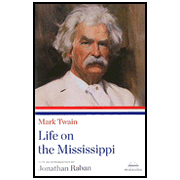 |
Mark Twain: Life on the Mississippi By Mark Twain / Library of America |
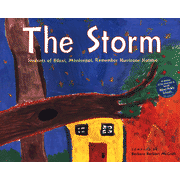 |
The Storm: Students of Biloxi, Mississippi, Remember Hurricane Katrina By Barbara Barbieri McGrath / Charlesbridge Publishing On August 29, 2005, Hurricane Katrina devastated the coastlines of Alabama, Mississippi, and Louisiana. It was a storm the people of Biloxi, Mississippi, like many other Gulf Coast residents, will never forget. Students, teachers, and administrators from the Biloxi Public Schools share their stories from the days preceding Hurricane Katrina to those first days of recovery after the storm. And even while their city lay in ruins, one remarkable lighthouse survived, serving as a beacon of hope. Their powerful images and moving personal accounts pay tribute to the resilience of the human spirit. A portion of the proceeds from the sale of each book will be donated to the Biloxi Public Schools. |
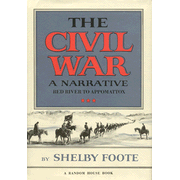 |
The Civil War, a Narrative, Vol. 1 By Shelby Foote / Random House, Inc Twenty years ago, in 1954, novelist Shelby Foote began this monumental work with these words: "It was a Monday in Washington, January 21; Jefferson Davis rose from his seat in the Senate..." In the third -- and last -- volume of this vivid history, he brings to a close the story of four years of turmoil and strife which altered American life forever. Here, told in vivid narrative and as seen from both sides, are those climactic struggles, great and small, on and off the field of battle, which finally decided the fate of this nation. "Red River to Appomattox" opens with the beginning of the two final, major confrontations of the war: Grant against Lee in Virginia, and Sherman pressing Johnston in North Georgia. While the Virginia-Georgia fighting is in progress, Kearsarge sinks the Alabama and Forrest gains new laurels at Brice's Crossroads. With Grant and Lee deadlocked at Petersburg, Sherman takes Atlanta -- assuring Lincoln's reelection, together with the certainty that the war will be fought (not negotiated) to a finish. These events are followed by Hood's bold northward strike through middle Tennessee while Sherman sets out on his march to the sea, to be opposed at its end by the ghost of the Army of Tennessee. Hood is wrecked by Thomas in front of Nashville-the last big battle -- and Savannah falls to Sherman, who presents it to Lincoln as a Christmas gift. Meantime, Early has threatened Washington, Price has toured Missouri, Farragut has damned the torpedoes in Mobile Bay, Forrest has raided Memphis, and Cushing has single-handedly sunk the Albemarle. And Sherman heads north through the Carolinas, burning Columbia en route, while Sheridan rips the entrails out of the Shenandoah Valley. Lincoln's second inaugural sets the seal on these hostilities, invoking "charity for all" on the Eve of Five Forks and the Grant-Lee race for Appomattox. Here is the dust and stench of war, a sort of Twilight of the Gods, with occasional lurid flare-ups, mass desertions, and the queasiness that accompanies the risk of being the last man to die. Then, penultimately. Lee at Appomattox, the one really shining figure in this last act.Davis's flight south from fallen Richmond overlaps Lincoln's death from Booth's derringer, and his capture at Irwinville comes amid the surrender of the last Confederate armies, east and west of the Mississippi River. The epilogue is Lincoln in his grave: and Davis in his posthumous existence. "Lucifer in Starlight." So ends a unique achievement -- already recognized as one of the finest histories ever fashioned by an American -- a narrative of over a million and a half words which recreates on a vast and brilliant canvas the events and personalities of an American epic: The Civil War. |
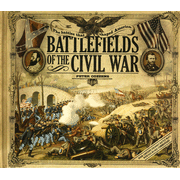 |
Battlefields of the Civil War By Peter Cozzens / Sterling Publishing Co., Inc. |
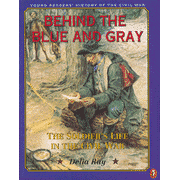 |
Behind the Blue and the Gray: The Solider's Life in the Civil War By Delia Ray / Puffin Books Telling the story of the "common soldier", Behind the Blue and Gray tells the stories of the men who fought and died behind the walls of smoke and battlefield commotion. Comprised of actual letters, photographs, and essays on the Civil War, this personalized view of the war is touching and a good reminder of the sacrifices made throughout history. 102 pages, softcover. |
 |
The Atlas of the Civil War By Edited by James M. McPherson / Running Press Follow the drama of the war that changed America with this unparalleled reference. Major campaigns and skirmishes from Fort Sumter to Appomattox are plotted on 200 full-color maps. Dynamic reconstructions depict every confrontation on land, river, and ocean. Timelines provide play-by-play commentary of battlefield action. Filled with photographs, illustrations, and gripping eyewitness accounts. 223 pages, 9" x 12" hardcover from Courage. |
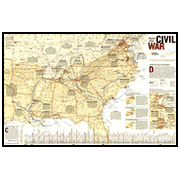 |
Battles of the Civil War Wall Map (in a Tube) By National Geographic Maps Created originally as a supplement to the April 2005 NATIONAL GEOGRAPHIC magazine, Battles of the Civil War is rich with detail, showing battle sites with numerous call-outs describing specific battles as well as dates and battle routes. Insets highlight ''Turning Points of the War,'' ''Battle for the Capitols,'' as well as battle death tolls. 36 x 23 inches (approx). |
 |
Great Writers: William Faulkner By Kultur International Films |
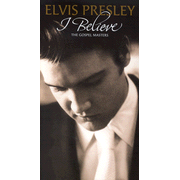 |
I Believe: The Gospel Masters, 4 CD Set By Elvis Presley / RCA Records Label Worship the King of heaven with the king of rock 'n' roll! This definitive gospel collection features over 65 favorites from Elvis, including "I Believe"; "Take My Hand, Precious Lord"; "Joshua Fit the Battle"; "How Great Thou Art"; "Down by the Riverside/When the Saints Go Marching In"; "Swing Low, Sweet Chariot"; "Bosom of Abraham"; and "Oh, How I Love Jesus." Four CDs. |
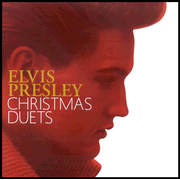 |
Christmas Duets CD By Elvis Presley / Provident Music Distribution Celebrate the birth of the Prince of Peace with the king of rock and roll and some of today's most popular country stars! Martina McBride, Anne Murray, Jessica Simpson, Sara Evans, LeeAnn Rimes, and others join Elvis in heartwarming duets of "Blue Christmas," "Silver Bells," "Silent Night," "O Little Town of Bethlehem," "O Come All Ye Faithful," and more. |
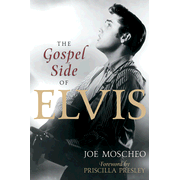 |
The Gospel Side of Elvis - eBook By Joel Moscheo / Center Street Gospel music was a significant part of not only who Elvis was as a man, but as an artist as well. This book looks at his roots and the role of gospel in his foundational years, as well as the comfort, solace, and strength it offered him in the years of his meteoric rise in popularity. From the All-Night sings he attended in his youth to the gospel quartets he incorporated into his shows, Elvis insisted on having constant access to the music he loved. He found it to be a source of comfort when the demands of his career were too much. He used it as a way to stay in shape vocally or to pass the time while on movie sets. He gathered friends, family, and admirers in his suite after shows to unwind during which Gospel was the music of choice. It was enrichment, it was comfort, it was home for him. |





